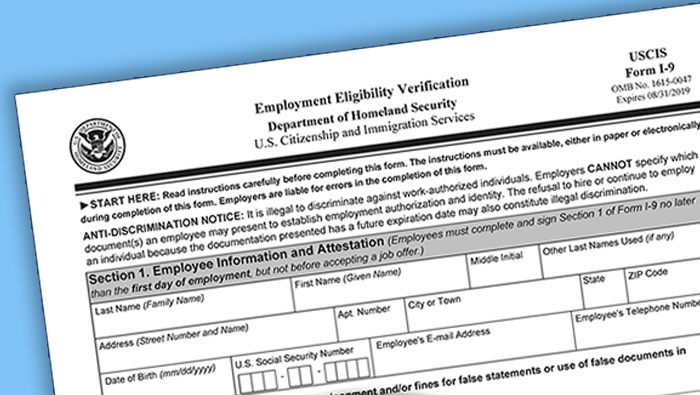The Employment Eligibility Verification Form I-9 has been used since 1986 to verify the legal status of new hires to work in the United States. The form and its associated regulations were created under the Immigration Reform and Control Act (IRCA).
The Form I-9 is legally required to be completed by all employees hired after November 6th, 1986, in the United States. Employers need to understand the form and its requirements as it is a critical immigration-related document.
Here are five key factors of the Form I-9:
- First, the current Form I-9 is dated August 1st, 2023 (Rev. 08/01/23). Employers must use that version of the form beginning November 1st, 2023.
- Second, the employer retains the form for three years after the hire date or one year after the end of that person’s employment, whichever is later. Thus, if someone works for you for one week and quits, you must retain the form on file for another three years. If that person leaves after five years, you must keep the form for one more year.
- Third, Form I-9 requires the submission of documents by the new hire to verify their eligibility to work in the United States. You, as the employer, cannot demand which documents the job applicant or new hire must submit. Verifying documents are classified as A, B, or C levels and are usually listed within the Form I-9 booklet. Some documents show both identity and employment authorization (List A). Other documents show identity only (List B) or employment authorization only (List C). One List A document is sufficient; otherwise, the new hire must submit one from List B and List C.
- Fourth, the employer – and the new hire – have three business days to complete the Form I-9, which requires the verification of submitted documents and signing and attesting to the information on the form. As a general practice, many employers start the I-9 verification process before the new hire begins work. However, you cannot start the process until a job is offered and the person accepts.
- Fifth, an arm of the U.S. Citizenship and Immigration Services (USCIS) called Immigration and Customs Enforcement (ICE) conducts periodic Form I-9 inspections. The inspections usually occur if the agency suspects or was alerted to people being hired even though they lacked the proper List A, B, or C documents. Fines for noncompliance range from $272 to $2,701 for each missing or inaccurately completed Form I-9. Additional penalties from $676 per worker up to $27,018 per worker can be levied in instances of immigration fraud.
I-9 Self-Audit eLearning Module
To help employers ensure that their I-9 process is complete and complies with federal regulations, Personnel Concepts has created the I-9 Self-Audit eLearning Module. The program is a brief, interactive eLearning guide that provides critical information on Form I-9 compliance, common mistakes, and how to audit existing records.
NOTE: The details in this blog are provided for informational purposes only. All answers are general in nature and do not constitute legal advice. If legal advice or other expert assistance is required, the services of a competent professional should be sought. The author specifically disclaims any and all liability arising directly or indirectly from the reliance on or use of this blog.

